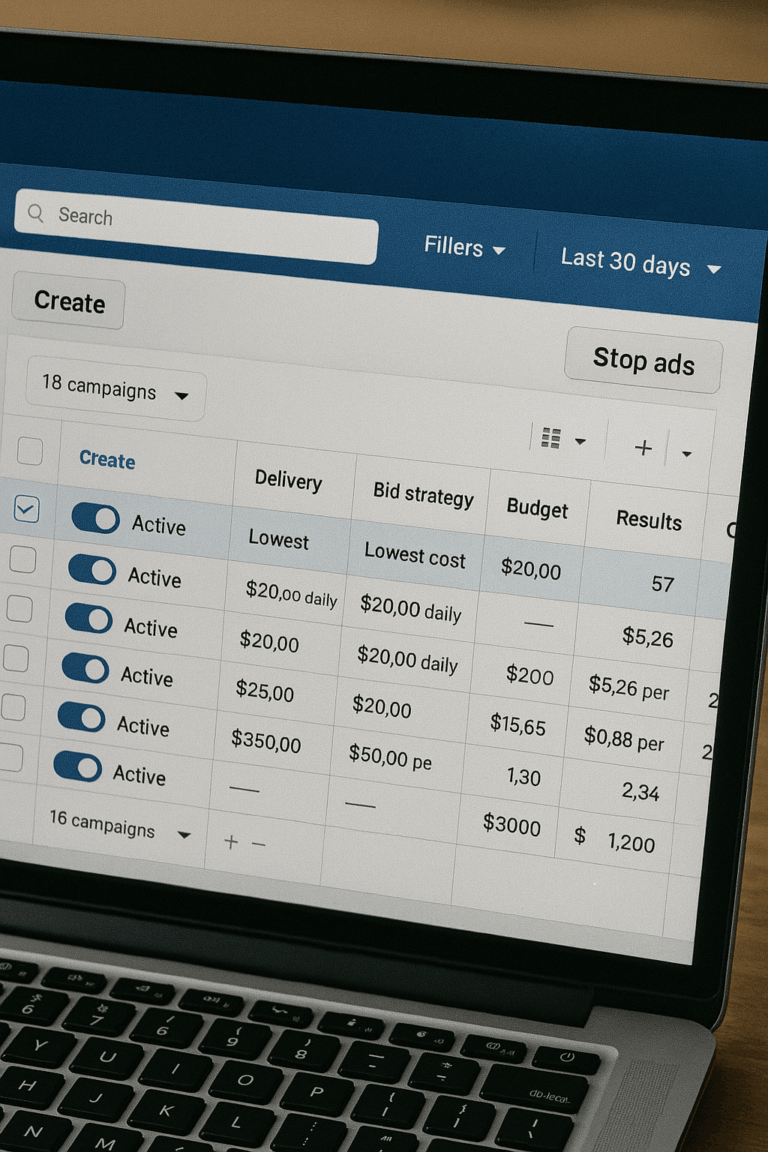The Marketer’s Guide to Incrementality Testing in 2025

Ad budgets are under more scrutiny than ever. It’s easy to see what you spent, but far harder to prove what you earned. Dashboards from Google, Meta, or TikTok all tell you they drove conversions, but how many of those would have happened anyway? This is the core challenge of modern marketing measurement.
Incrementality testing answers that question. By isolating incremental lift from ads, it reveals whether your marketing campaign is truly creating new revenue or simply claiming credit for conversions that were already in motion.
Attribution vs Contribution: Why It Matters
Most marketers start with attribution models. First-touch, last-touch, or multi-touch attribution assign credit to touchpoints along the customer journey. But attribution has two problems. First, platforms double count outcomes. Second, attribution ignores the baseline of what would have happened without marketing.
That’s where contribution comes in. Contribution measures incremental impact. Instead of asking “who touched the customer,” the contribution asks, “which marketing activity changed the outcome?” This distinction of attribution vs contribution reframes how marketers evaluate campaign performance and sets the stage for incrementality testing.
What Is Incrementality Testing?
An incrementality test is a controlled experiment that compares a test group exposed to ads with a control group that is not. By measuring the difference in outcomes between the two groups, marketers can calculate the true effect of a specific campaign.
For example, imagine a brand runs a holdout test on a paid social campaign. In the test group, customer acquisition costs land at $50 per new customer. In the control group, natural acquisition costs average $70. The $20 difference is the incremental CAC (iCAC). That gap proves the channel or tactic being tested made acquiring each customer more efficient, isolating the true incremental value of the ad spend.
How Incrementality Testing Works
There are two main ways to run an incrementality experiment:
-
Holdout Testing: Ad spend is withheld from select markets and compared against spend in similar markets to establish a counterfactual.
-
Growth Tests: Ad spend is increased in select markets to see if higher investment scales results efficiently. Growth tests validate whether increasing spend within a tactic or channel (or launching a new tactic or channel) can drive incremental growth.
Both approaches are statistically rigorous matched market tests and allow marketers to quantify incremental revenue from advertising rather than relying on attribution models that overstate impact.
Incrementality and Marketing Mix Modeling
Marketing mix modeling (MMM) complements incrementality testing. MMM analyzes 18–24 months of historical data across all channels, including external factors like seasonality, promotions, and competitive activity. While incrementality tests prove the causal impact of a specific tactic or channel in real time, MMM builds a long-term benchmark for how each channel contributes to sales.
Used together, MMM and incrementality form a feedback loop. MMM sets expectations for channel performance, and incrementality tests validate and calibrate those expectations with live marketing experiments. This combination gives leaders confidence in budget allocation and ensures marketing spend is tied to measurable outcomes.
Where Incrementality Testing Works Best
Incrementality is most effective when you can isolate exposure and create clear test vs control conditions. Helpful tips below:
-
Retail media and marketplace ads: Retail media measurement can help identify the direct lift of retail campaigns on retail sales, or take an omnichannel view by examining how D2C spend influences retail and marketplace performance. This is where the halo effect comes in. A D2C channel might drive unexpected sales lift in Amazon or other retailers, which would go unseen without incrementality testing.
-
Influencer campaigns: These campaigns are much harder to test directly. Most influencer buys lack geo-targeting or clean audience splits. Here, marketers often rely on MMM or causal impact analysis rather than pure holdout testing to estimate incremental impact.
Running an Effective Incrementality Test
To make incrementality testing work, marketers should:
-
Set clear objectives tied to a desired outcome like iCAC, iROAS, or sales velocity.
-
Define test and control groups carefully to ensure comparability.
-
Run tests long enough to capture full customer cycles and account for natural variation.
-
Control for external factors such as seasonality or competitor promotions.
Done right, incrementality testing transforms marketing evaluation from surface-level metrics into meaningful, actionable insights.
Why Incrementality Testing Matters in 2025
Privacy shifts, cookie loss, and fragmented journeys make attribution less reliable by the day. Brands that rely only on last-click or multi-touch reporting risk overspending on funnel measurement that doesn’t move the business forward.
Incrementality testing provides a durable alternative. It cuts through inflated dashboards, proves causal impact, and aligns marketing performance with business outcomes. And when paired with a marketing mix model, it creates a system for smarter planning, better budget allocation, and more predictable future campaigns.
In a market where every dollar is under pressure, knowing the incremental impact of your ads isn’t just a nice-to-have; it’s the foundation of an effective marketing strategy.
Our Editorial Standards
Reviewed for Accuracy
Every piece is fact-checked for precision.
Up-to-Date Research
We reflect the latest trends and insights.
Credible References
Backed by trusted industry sources.
Actionable & Insight-Driven
Strategic takeaways for real results.

















